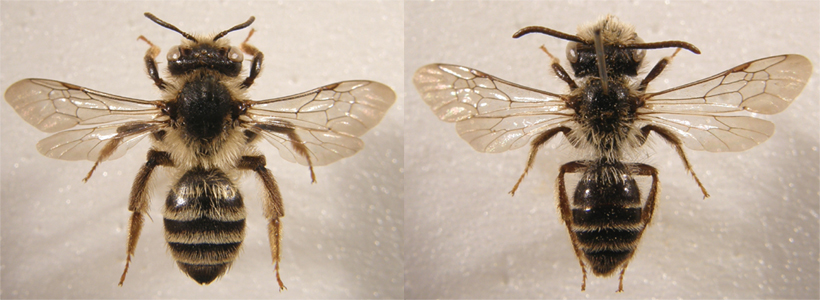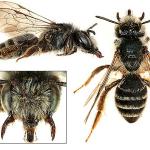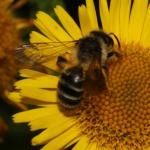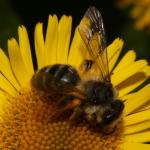Andrena listerella (Kirby, 1802).
This is a medium-sized Andrena, one of a group of five species (A. denticulata, A. fuscipes (Kirby), A. nigriceps (Kirby), A. simillima Smith and A. tridentata (Kirby)) where the females have distinctive, triangular hind tibiae which do not incurve distally and with a strongly banded appearance to the copiously-haired abdomen. Within the group the species are all rather similar, especially the males.
Although widely dispersed throughout Great Britain and Ireland, this species is localised and rarely frequent at any one site. It is possible that the species is declining due to overall habitat loss.
A. denticulata is widespread in Europe. However, it has been categorised as Red List 3, Endangered, in Germany.
This species is not regarded as being scarce or threatened.

Female (left) and male (right).
(Photos: Steven Falk)
May be found in open, grassland habitats where there is a good representation of yellow Asteraceae flowers. It is most often associated with sandy areas.
Univoltine; July to September.
Nests singly in the ground.
A variety of species of the Asteraceae, especially yellow-flowered ones.
The cuckoo-bee Nomada rufipes Fabricius is a parasite of this species.
2006




